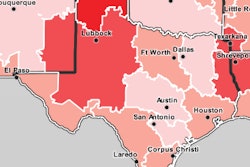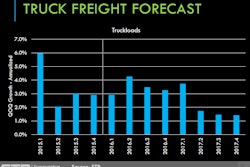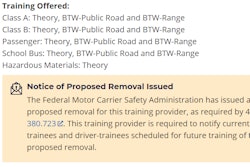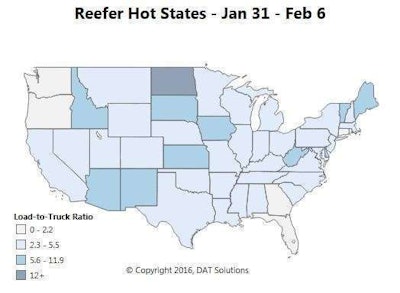
The Hot States map above shows load-to-truck ratios by state last week on DAT Load Boards in the refrigerated segment. DAT’s Ken Harper notes that “Arizona, New Mexico and Texas border crossings are more active than California” right now. “That explains in part the better load-to-truck ratios in Arizona and New Mexico.”
Texas’ size and overall activity dilutes the border reefer volume’s effect on the ratios “as you look at reefers across that state,” he added.
And nationally, the load-to-truck ratio declined from 3.8 to 3.4 loads per truck for reefers last week, the first week in what is typically the slowest month of the year on their load boards, DAT says. Lulls are well apparent on the map in the very-low-demand Pacific Northwest, as well as Florida and Georgia.
At once, per DAT’s Matt Sullivan, writing specifically about similarly slow van activity, “There are signs that rates might have finally bottomed out.”
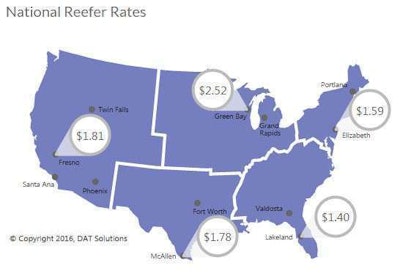 Reefer rates fell another 3 cents to a national average of $1.85 per mile last week, including a 1¢ decline in the average fuel surcharge. Rates rose for hauls originating in Sacramento, Calif.; Nogales, Ariz.; Dallas; and Lakeland, Fla., but outbound rates fell sharply for reefers in Green Bay, Wis., where they remained on average higher than more Southern origin points, and Elizabeth, N.J. For more on what’s happening with reefer rates, read Matt Sullivan’s analysis this week at this link.
Reefer rates fell another 3 cents to a national average of $1.85 per mile last week, including a 1¢ decline in the average fuel surcharge. Rates rose for hauls originating in Sacramento, Calif.; Nogales, Ariz.; Dallas; and Lakeland, Fla., but outbound rates fell sharply for reefers in Green Bay, Wis., where they remained on average higher than more Southern origin points, and Elizabeth, N.J. For more on what’s happening with reefer rates, read Matt Sullivan’s analysis this week at this link.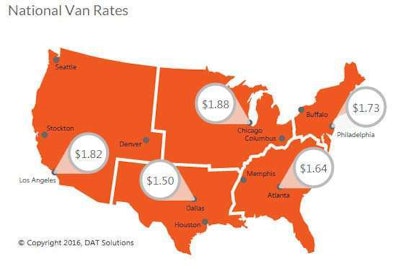 The picture for vans this past week was similar dim, with a 3-cent decline bringing the national van-rate average down to $1.62 per mile. The change included another 1 cent decline in the average fuel surcharge. Rates rose for high-volume lanes originating in Denver, Houston and Atlanta, but outbound rates declined in Chicago and Philadelphia.
The picture for vans this past week was similar dim, with a 3-cent decline bringing the national van-rate average down to $1.62 per mile. The change included another 1 cent decline in the average fuel surcharge. Rates rose for high-volume lanes originating in Denver, Houston and Atlanta, but outbound rates declined in Chicago and Philadelphia.The roundtrip between Chicago and Columbus is problematic, but not because of the rate per loaded mile, which is a solid (for this time of year) $1.82. The difficulty is you’ll spend the better part of two days on the road. With only 700 total miles at that rate, you’d generate about $1,278 worth in revenue, based on the lane averages derived from DAT RateView, less than $650 per day.

Opportunity exists on the return from Columbus with shorter runs to the neighboring states of Michigan, Indiana and Kentucky, and a second load back to Chicago. One option is Louisville. A “TriHaul” from Columbus to Chicago via Louisville will boost your average rate from $1.82 to $2.08/mile for the roundtrip. As long as loading delays don’t add another day to the two-day trip, you’ll boost your per-day revenue by nearly 50 percent for a total $1,800. Examine the details below.


